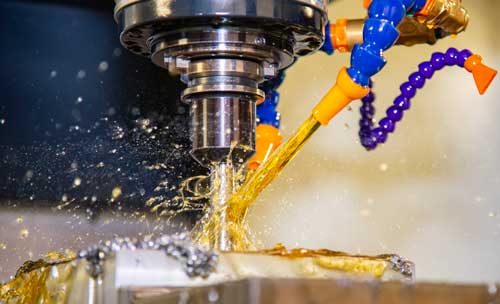
Over the past three decades, we’ve had a lot of conversations with countless clients and prospects. As you can imagine, they tend to revolve around spindles and spindle care.
One topic that comes up regularly is the idea of doing a warmup cycle on your spindles. Responses have always been mixed — some do, some don’t, and some operate 24/7 and think they don’t have to but they do (when, for example, they replace a spindle).
We thought we’d take some time today to talk about the importance of warming up your spindles.
When and Why Does a Spindle Need a Warmup?
We recommend that you do a warmup cycle after your CNC machine has been idle — whether just overnight, after a weekend, or when a spindle is installed, whether it’s new, repaired, or just pulled from storage.
This is our recommendation for one major reason: lubrication distribution. If you crank a cold machine straight up to operating speed without taking the time to properly warm it up, you’re not giving the lubrication system time to distribute oil or grease evenly. This causes unnecessary friction, rapid temperature spikes, hastened lubrication breakdown, and damage that can be quite severe, and costly.
How to Warmup Your Spindle
There’s no universal way to warm up a spindle. Every machine has different runup and warmup procedures. For that reason, we always recommend that you follow the OEM’s instructions. If you don’t know them, reach out — they’re usually happy to help.
That said, there are a few general guidelines that you should be following:
- Warm up your spindles at every start-up. Do it incrementally, monitoring temperature as you go.
- For oil-lubricated spindles, wait until you see oil draining before ramping up to full speed, this tells you that oil has moved through the entire system, lubricating all the parts in its path.
- Closely monitor temperature to be certain that the spindle isn’t running too hot. If the temp creeps out of the acceptable range, dial it back, and bring it back up more gradually.
- Monitor vibration levels as well — if you have the right equipment, like VibePro, you can monitor your machine’s vibrations and glean a huge amount of real-time performance information.
The warmup cycle is especially important on a brand-new spindle. The process is typically referred to as “break-in”. Just like with an everyday warmup, a break-in cycle will vary by machine and maker, but here’s the general process:
- Start the spindle at a fraction of its maximum speed
- Run it for a while
- Monitor temperature and vibration closely
- If temperature and vibration remain steady, increase the speed by small increments
- Repeat steps 2 to 4 until:
- Maximum RPM is reached, and
- Temperature remains stable and within spec, and
- Vibration remains stable and in-spec
- If at any time the temperature or vibration levels spike:
- Stop the spindle
- Return it to ambient temperature
- Begin the process again, starting at a speed just slower than when you stopped
What Happens if I Don’t Do It?
Once or twice, if not severe, probably nothing (if you’re lucky).
But if you skip it habitually? Well, in short… eventually, you’re in for a world of hurt.
We’ve written at length about all the bad — and expensive — damage that a poorly cared for spindle can sustain. Overheating leads to premature bearing wear and aging. Wear and aging in the bearings of a spindle leads to inaccuracies and/or defects in your work product. They also, of course, lead to spindle failure and expensive repairs on a schedule that far outstrips maintenance expectations.
All of that without even factoring in the costs and frustrations caused by ever-looming unplanned downtime.
In short: putting your spindles through a warmup cycle may cost you some time here and there, but that’s nothing compared to the cost of shutting down your production line and rebuilding or replacing a damaged-beyond-repair spindle.
